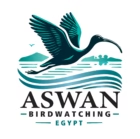Aswan’s Nile islands and riverbanks are fringed by native trees and shrubs, creating lush oases amid the desert. UNESCO describes the Saluga and Ghazal islands near Aswan as remnants of a Nile gallery forest, with “trees of six species of Acacia” dominating this rich vegetation. Aswan is also home to other plants like sesban, tamarisk, milkweed (calotropis procera), and henna shrubs. These trees bloom with fragrant flowers and bear seed pods that feed insects and birds.
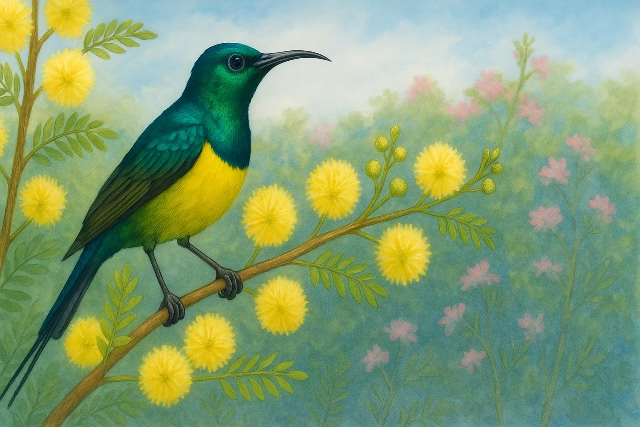
Nectar and Warblers: Sunbirds Among the Acacias
Among the most dazzling residents of these acacia groves is the Nile Valley Sunbird (Hedydipna metallica). This tiny nectar-feeder dazzles birdwatchers with its color: in winter both sexes are dull olive-gray, but come spring the male is transformed into a glossy green extrovert with a brilliant sulfur-yellow belly. Perched on an acacia branch, the male fluffs out its long tail streamers and flits eagerly from blossom to blossom. Sunbirds sip nectar from acacia flowers and hibiscus and desert lilies. Their long curved bill is perfectly adapted to probing blossoms, and as they drink they also pollinate the trees. Not surprisingly, the Nile sunbird is most abundant where acacias flourish: the Saluga–Ghazal reserve is famously “the only place in Egypt where the Nile sunbird still exists in fairly viable numbers”. By late winter, when the first acacias bloom, flocks of male and female sunbirds light up the thickets – a sure sign of spring along the Nile.
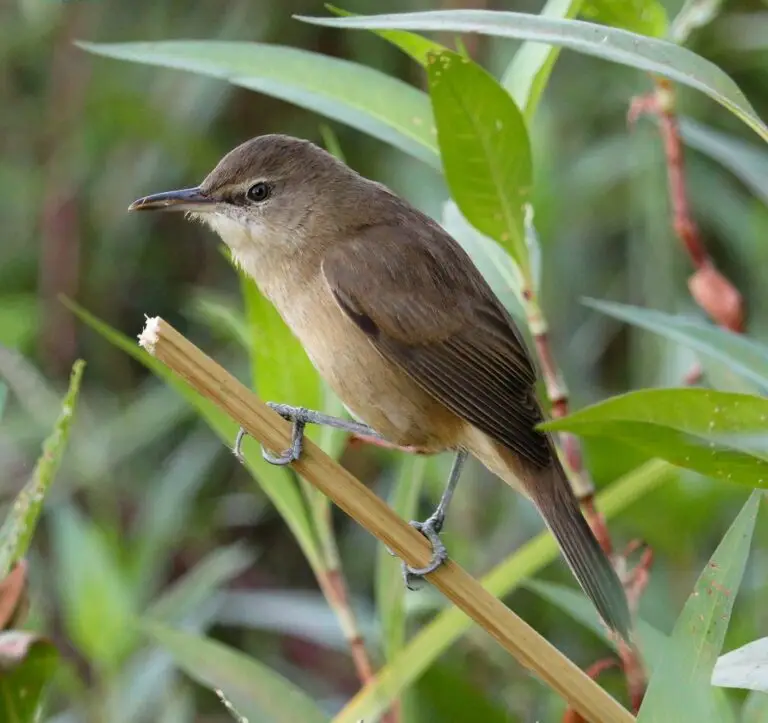
Reeds and River Shrubs: Habitat for Clamorous Warblers
Along the river’s edge, reeds and marshy scrub support a different set of birds. Irrigation canals and Nile lagoons teem with giant reeds (Arundo donax, Phragmites) and papyrus, which are extremely common by the Nile. Hidden in this wetland tangles lives the Clamorous Reed Warbler (Acrocephalus stentoreus). This brown, insectivorous warbler is a species found in large reed beds, often with some bushes. Along Aswan’s waterways, reed warblers build woven basket nests in the stalks and feed on spiders and caterpillars among the reeds. You’ll hear the reed warbler’s loud bubbling song echoing from bulrushes and tamarisks at dawn. This bird is a resident of the Nile valley, and even during migration seasons remains in lush riverine patches. The combination of reedbeds, tamarisk scrub and adjacent farmland ensures a steady insect supply year-round.

Scrubland Songs: Olivaceous and Whitethroat Warblers
In the drier scrub and gardens on the Nile’s banks, other small warblers flit among thorny bushes. The Eastern Olivaceous Warbler (Iduna pallida), for example, often skulks in tamarisk and acacia scrub in spring. It gleans insects from buds and leaves, listening for grasshoppers and aphids hiding in the branches. Likewise, the Lesser Whitethroat (Curruca curruca) breeds further north but passes through Aswan on migration. Field notes from the region highlight that Lesser Whitethroat is a bird of fairly open country and cultivation, found in Acacias and mature urban gardens during migration.
In other words, migrating warblers routinely make use of acacia groves and riverine shrublands as stopping points. These seasonal visitors rely on the dense foliage to rest and feed. In spring, you might see an Eastern Olivaceous Warbler perched on a tamarisk blossom, or hear a Lesser Whitethroat’s scratchy warble from an acacia thicket. Such plant-bird relationships are vital: the trees shelter the nests and food of these species, which in turn help control insects and may disperse seeds.
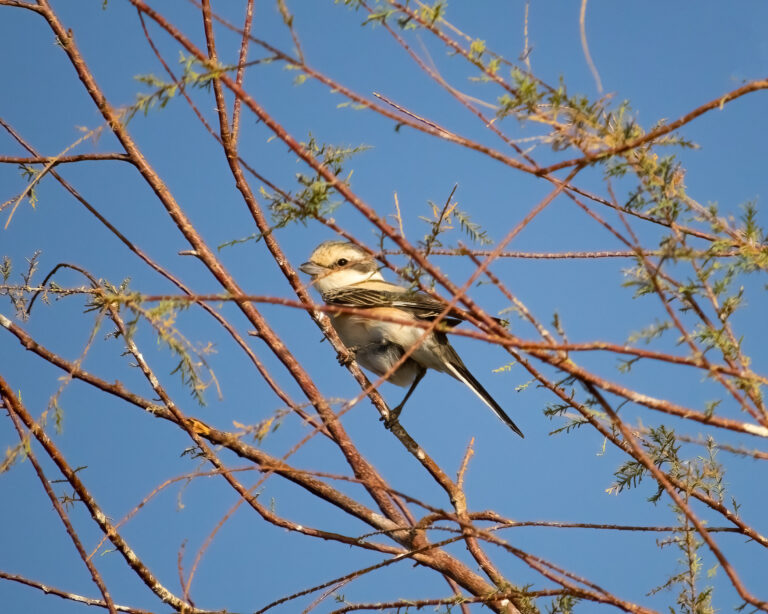
A Living Tapestry: Plants, Birds, and Ecosystem Health
The vibrant interaction between Aswan’s flora and its birds illustrates a healthy ecosystem. Acacias not only provide nectar and fruit, but also nesting sites and shade. Birds like sunbirds and warblers then pollinate flowers, eat harmful insects and spread seeds—closing the loop of life along the Nile.
Birdwatching records emphasize this richness. Reports note that the islands’ midstream mix of dry scrub and wetland vegetation supports more than 150 species of migratory and resident birds, making Aswan one of the preeminent birding sites in Egypt.
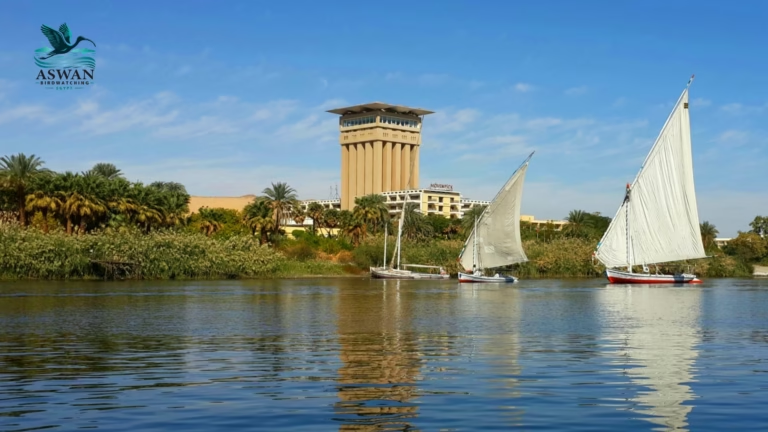
Explore it yourself with Aswan Birdwatching
Aswan’s bird–plant wonders are best experienced firsthand. Aswan Birdwatching offers guided birdwatching tours in Aswan that bring you right into these vibrant habitats.
Our trips let visitors spot Nile Valley Sunbirds sipping acacia nectar, Clamorous Reed Warblers in the reeds, and spring migrants warbling from the willows. With a sharp eye and local knowledge, your guide (Ismael Khalifa) will point out how each plant supports the birds – from blossoms that lure sunbirds to dense shrubs that shelter warblers.
Book a trip with Aswan Birdwatching today, and discover the living tapestry of birds and blossoms along the Nile!

